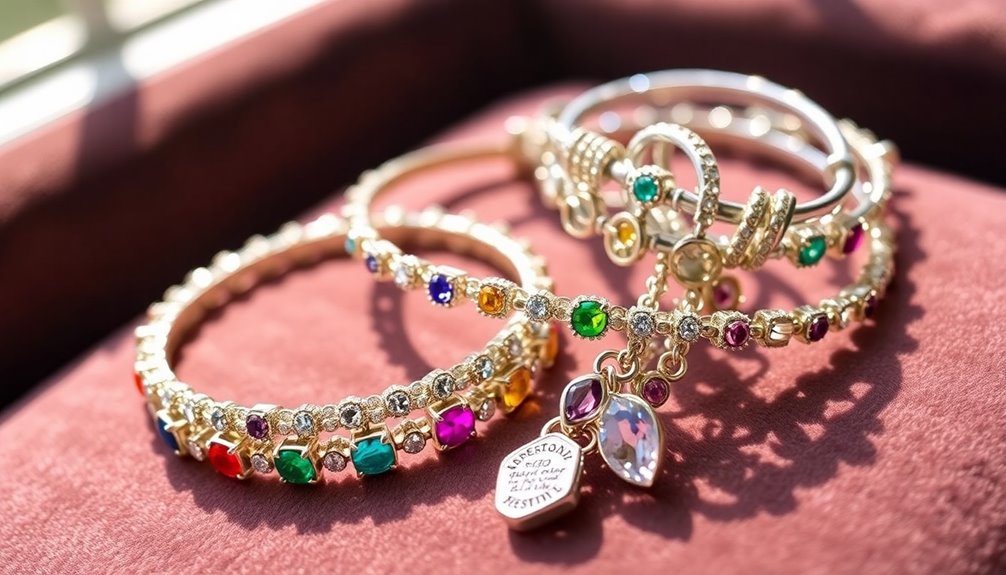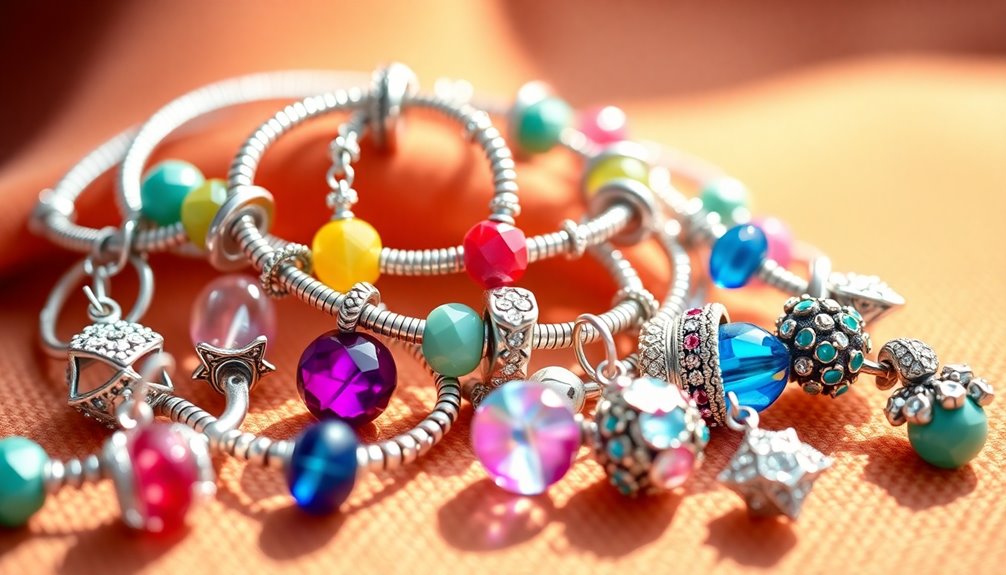Are your diamonds truly ethical? Not always. Even conflict-free stones can have complicated origins, with ongoing concerns about labor practices and environmental impact. Some mines pay fair wages and follow safe procedures, but others still involve child labor or cause ecological harm. To make responsible choices, look for certifications and ask questions about a diamond’s journey. If you want to uncover what truly lies behind your gem, there’s more to learn.
Key Takeaways
- Not all diamonds labeled “conflict-free” are ethically sourced; verify certifications and supply chain transparency.
- Ethical diamonds prioritize fair labor practices, safe working conditions, and the absence of child or forced labor.
- Environmental impacts vary; lab-grown and recycled diamonds are more sustainable options than traditional mining.
- Certifications like the Kimberley Process help reduce conflict diamonds but may not cover all ethical concerns.
- Asking about a diamond’s origin, mining practices, and environmental policies ensures a more responsible purchase.

Have you ever wondered where your diamond comes from? Many people assume that a beautiful gemstone must be ethically sourced, but the reality is more complex. The journey of a diamond involves various stages, each with its own ethical considerations, especially regarding labor practices and environmental impact. When you buy a diamond, it’s vital to understand that not all stones are created equally in terms of how they’re mined and handled.
Labor practices at mining sites can vary widely. In some regions, workers are paid fair wages, work in safe conditions, and are respected for their rights. However, in many cases, especially in developing countries, miners face dangerous conditions, long hours, and little pay. Child labor and forced labor are still issues in certain areas, making it imperative for you to seek out diamonds certified as conflict-free and ethically mined. These certifications often guarantee that the workers involved are treated fairly and that their rights are protected. By choosing diamonds with transparent labor practices, you’re supporting a more humane and just industry.
Environmental impact is another vital aspect of ethical diamond sourcing. Traditional mining can cause significant harm to ecosystems. It often involves removing vast amounts of earth, disrupting wildlife habitats, and polluting water sources with chemicals used in the extraction process. These environmental issues can last long after the mining stops, affecting local communities and ecosystems. Fortunately, the industry is evolving, and many jewelers now offer lab-grown or sustainably mined diamonds that reduce this impact. These options typically require less energy and produce fewer pollutants, making them more environmentally friendly. When shopping for an ethical diamond, it’s worthwhile to ask about the environmental policies of the source. Recycled diamonds or those mined with eco-conscious methods demonstrate a commitment to reducing ecological harm. Additionally, choosing sustainable mining practices can significantly mitigate environmental damage associated with diamond extraction.
Understanding the ethics behind your diamond isn’t just about checking boxes; it’s about aligning your purchase with your values. By paying attention to labor practices, you guarantee the people behind your gemstone are treated fairly. Considering the environmental impact helps you make a choice that protects the planet for future generations. Ethical sourcing not only guarantees that your diamond is conflict-free, but it also supports a more sustainable and humane industry overall. When you’re making such a significant purchase, take the time to do your research. Ask questions, seek certifications, and choose sources committed to transparency and responsibility. Your choice has the power to influence the industry and promote better practices worldwide.
Frequently Asked Questions
Are Synthetic Diamonds More Ethical Than Natural Conflict-Free Stones?
You might wonder if synthetic diamonds are more ethical than natural conflict-free stones. Synthetic ethics often favor lab-grown diamonds because they typically have a lower environmental impact and avoid issues like conflict or exploitation. By choosing synthetic diamonds, you reduce environmental harm and support more sustainable practices. So, if ethics and environmental impact matter to you, lab-grown options could be a more responsible choice, aligning with your values.
How Can Consumers Verify a Diamond’s Ethical Certification?
You can verify a diamond’s ethical certification by checking the certification verification process provided by reputable organizations like GIA, IGI, or HRD. Look for documents that confirm ethical sourcing and conflict-free status. Always ask for official certificates when purchasing, and verify they detail the origin and ethical standards met. Doing this helps you confidently choose a diamond that aligns with responsible sourcing practices.
Do All Conflict-Free Diamonds Meet Environmental Standards?
Not all conflict-free diamonds automatically meet environmental standards. While they avoid ethical issues like forced labor, their environmental impact depends on mining practices. Some conflict-free sources use sustainable methods, minimizing ecological damage. However, others may still cause significant environmental harm through land disruption or pollution. You should research the specific mining practices behind your diamond to verify it aligns with your environmental values, rather than relying solely on conflict-free certification.
Are There Ethical Concerns With Lab-Grown Diamonds?
Imagine a diamond created in a lab, shining just as brightly as one mined from the earth. Lab-grown benefits include reduced environmental impact and ethical sourcing, but some worry about transparency in the process. As a consumer, you seek transparency, ensuring your choice aligns with your values. While lab-grown diamonds generally pose fewer ethical concerns, staying informed helps you make responsible decisions, knowing your sparkle supports both ethics and sustainability.
What Role Do Governments Play in Regulating Ethical Diamond Mining?
Governments play a crucial role in regulating ethical diamond mining through oversight and strict regulatory policies. They establish standards to prevent conflict diamonds, ensure safe working conditions, and protect environmental resources. Your awareness of these regulations helps you make informed choices, knowing that government oversight aims to promote transparency and accountability in the industry. By supporting brands that adhere to these policies, you contribute to ethical practices and responsible sourcing.
Conclusion
You might be surprised to learn that over 60% of diamonds marketed as “conflict-free” still face ethical concerns, highlighting the complexity of ethical sourcing. While choosing certified stones helps, it’s important to research brands and their supply chains. By staying informed, you can make more responsible choices and guarantee your diamond doesn’t come at the expense of human lives or environmental health. Ultimately, ethical diamonds are about transparency and accountability—your awareness makes a difference.










